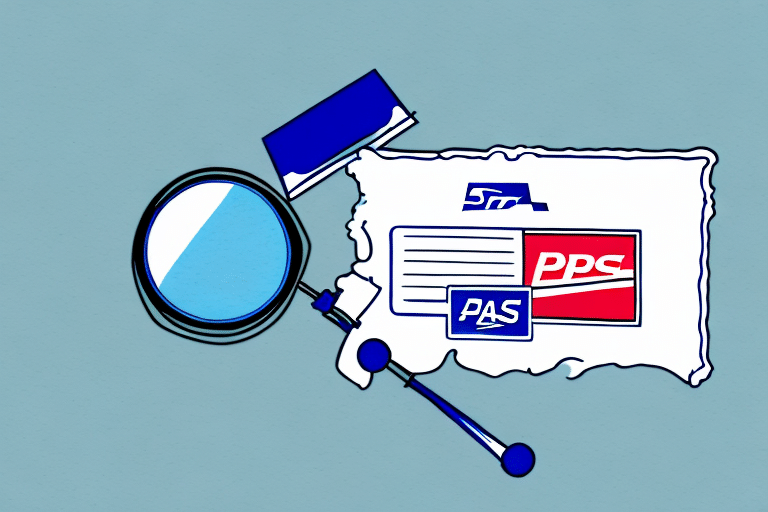Why Choose USPS Shipping Insurance?
Shipping valuable items can be a concern for both individuals and businesses. USPS Shipping Insurance offers a reliable solution to protect your packages against loss, damage, or theft during transit. By opting for insurance, you gain peace of mind knowing that your items are safeguarded, allowing you to send packages with confidence.
How USPS Shipping Insurance Works
USPS Shipping Insurance functions by providing financial protection based on the declared value of your package. Here’s a breakdown of how it operates:
- Declaration of Value: When shipping a package, you declare its value. This declared value determines the insurance coverage.
- Eligibility: Insurance is available for packages sent via services that include tracking and delivery confirmation, such as Priority Mail and First-Class Mail.
- Filing a Claim: In the event of loss, damage, or theft, you can file a claim with USPS, providing necessary documentation to receive reimbursement for the declared value.
For detailed information, refer to the official USPS Insurance Services.
Coverage Offered by USPS Shipping Insurance
USPS Shipping Insurance covers a range of scenarios to ensure comprehensive protection for your shipments:
- Loss: Compensation is provided if the package is lost during transit.
- Damage: Reimbursement is available for items damaged while being handled or transported.
- Theft: Protection against theft ensures you are not financially burdened if your package is stolen.
However, it's important to note that certain items, such as cash, hazardous materials, and restricted items, are excluded from coverage. Always review the USPS Insurance guidelines to ensure your items are eligible.
Cost of USPS Shipping Insurance
The cost of USPS Shipping Insurance is directly tied to the declared value of your package. Typically, the pricing structure is as follows:
- Priority Mail: Approximately $0.75 to $2.50 per $100 of declared value.
- Priority Mail Express: Offers higher coverage limits, with costs scaling accordingly.
For instance, insuring a package valued at $500 would cost around $12.50 when using Priority Mail. It’s advisable to consult the USPS Insurance Calculator for precise pricing based on your specific needs.
Factors Influencing the Cost of Insurance
Several factors can affect the overall cost of USPS Shipping Insurance:
- Declared Value: Higher declared values result in increased insurance costs.
- Shipping Service: Different USPS services offer varying levels of insurance coverage and corresponding costs.
- Package Weight and Dimensions: Larger or heavier packages may incur additional insurance fees.
- Destination: International shipments might have different insurance pricing compared to domestic ones.
Understanding these factors can help you estimate and manage your shipping insurance expenses effectively.
Tips to Save on USPS Shipping Insurance
Managing the cost of shipping insurance doesn't have to be challenging. Consider the following strategies to minimize expenses:
- Assess Necessity: Evaluate whether insurance is needed based on the value and fragility of the items being shipped.
- Use Flat Rate Boxes: USPS Flat Rate Shipping provides a fixed insurance cost regardless of package weight, potentially reducing expenses for heavier items.
- Optimize Packaging: Proper packaging can lower the risk of damage, potentially reducing the need for higher insurance coverage.
- Combine Shipments: Consolidating multiple items into a single shipment can lower overall insurance costs.
For more cost-saving tips, visit the USPS Shipping Tips page.
Alternatives to USPS Shipping Insurance
While USPS Shipping Insurance is a convenient option, it's beneficial to explore other insurance alternatives to find the best fit for your needs:
- Third-Party Insurance Providers: Companies like Fidelity and UPS Insurance offer competitive rates and coverage options.
- Credit Card Benefits: Some credit cards provide shipping insurance benefits when you use them to pay for postage.
- Carrier Insurance: Other carriers such as FedEx and DHL offer their own insurance plans, which might include different coverage terms and pricing.
Comparing these options can help you secure the most comprehensive and cost-effective insurance coverage for your shipments.
Understanding Your Liability Without Insurance
Opting out of USPS Shipping Insurance means assuming full responsibility for your package’s safety. In cases of loss, damage, or theft, USPS offers limited liability:
- Basic Liability: USPS provides a minimum liability coverage, which may only reimburse the cost of postage in the event of loss.
- Limited Claims: Without insurance, filing claims for valuable items can be cumbersome and may not fully cover the item's worth.
For high-value or fragile items, foregoing insurance could result in significant financial loss. Therefore, evaluating the risk and value of your shipments is crucial when deciding on insurance coverage.
Common Misconceptions About USPS Shipping Insurance
There are several misunderstandings surrounding USPS Shipping Insurance that can lead to confusion:
- All Items Are Covered: Not all items are eligible for insurance. Prohibited and restricted items are excluded from coverage.
- Automatic Coverage: Insurance isn't automatically applied unless explicitly purchased or included with certain USPS services.
- Full Replacement Value: Insurance typically only covers the declared value, not necessarily the market value or additional costs such as taxes and shipping fees.
Understanding these misconceptions can help you make informed decisions about insuring your shipments.
How to File a Claim with USPS for Damaged or Lost Packages
Filing a claim with USPS is a straightforward process designed to reimburse you for eligible losses:
- Gather Documentation: Prepare necessary documents such as the original receipt, proof of value, and evidence of damage or loss (e.g., photos).
- Submit the Claim: Claims can be filed online through the USPS Claims Portal, by mail, or over the phone.
- Wait for Processing: USPS will review the claim and notify you of the decision. Processing times can vary based on the complexity of the claim.
Ensuring all documentation is complete and accurate can expedite the claim process and improve the chances of a successful reimbursement.
Conclusion
Investing in USPS Shipping Insurance is a prudent decision for anyone sending valuable or fragile items. It offers financial protection against unforeseen events such as loss, damage, or theft, ensuring that your shipments arrive safely and that you are compensated in case of mishaps. By understanding how USPS Shipping Insurance works, assessing the associated costs, and exploring alternative options, you can make informed decisions that best suit your shipping needs. Always evaluate the value of your items and the potential risks involved to determine the appropriate level of insurance coverage.






















